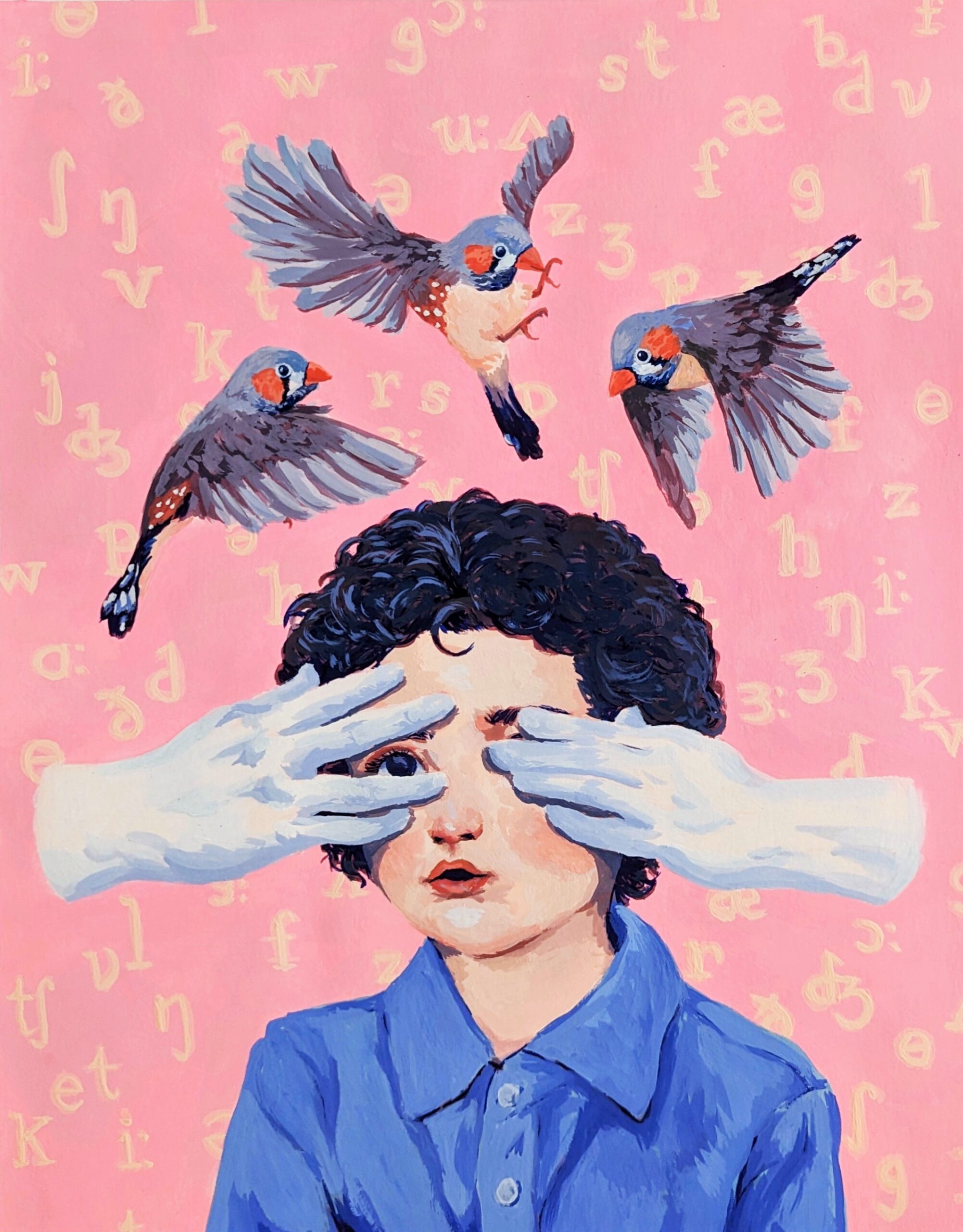2023 Best in Painting & Drawing – Katie Bonefas

Critical periods in 3 parts
Gouache painting
Your experiences shape your reality. Your ability to see, to move, to speak all depend upon you getting the right input during critical periods of development. A covered eye at this time will never form the connections required for sight. When we learn our native tongue, we also lose the ability to distinguish the unique sounds of other languages. Even a zebra finch must learn its complex mating song during its critical period, else be left to a life of solitude. During critical periods, our world irrevocably shapes us, carving in stone the neural connections that will dictate our lives.
In this piece, I explored the phenomenon by which your life experiences shape your relationship with reality. While this may sound like something out of the Matrix, it is actually a fundamental process of neurodevelopment that occurs across species. During early development, your brain is building trillions of synapses in the attempt to efficiently process all the complexities of daily life. This is not just learning on a grander scale – there are critical periods in which the information you receive will determine how you function the rest of your life. One landmark example is for sight: if one eye is covered during its critical period of development, the brain regions connected to this eye will never develop the ability to interpret light (Wiesel and Hubel, 1963). A perfectly healthy eye will now be blind, even if it is uncovered after the critical period.
Critical periods are not limited to the senses, there are also critical periods for higher cognitive functions like social skills and language. Many adults have experienced the difficulty of learning a second language, struggling to hear and reproduce sounds that are wholly unfamiliar. Children are so adept at this task because there are many critical periods for language acquisition. Before you could even speak, you could distinguish the phonemes – the unique units of sound – from foreign languages you had never encountered (Werker and Tees, 1984). In the effort to be as efficient as possible, adult brains lose this ability and home in on the phonemes of your native tongue. For some phonemes, your adult brain literally cannot tell the difference! Critical periods of language are quite complex and require unique model systems to investigate them deeply. A common model is zebra finch song learning, as zebra finches learn their intricate mating songs from an adult tutor during a juvenile critical period (Eales, 1985). They then practice and crystalize the tune they will sing for the rest of their life – a bad tutor means being stuck with a terrible song and potentially life as a bachelor.
My piece depicts multiple aspects of critical periods using a surrealist approach. Historically, surrealism explores the fundamental truths within our subconscious, unveiling unknown connections to our waking world. I found this style very fitting for critical periods as they fundamentally shape our future interactions with reality, with many critical periods occurring before we are fully conscious. This piece explores three representations of critical periods – monocular depravation, zebra finch song learning, and language phonemes. Marble hands cover one eye of a child, representing how loss or presence of these inputs carve out and solidify your future life. Above the child’s heads are zebra finches, the exemplar model organism for critical periods. In the background are the phonetic symbols of the English language, representing the multitude of human sounds children are exposed to and learn to recognize. I painted this piece in gouache, using bold, childlike colors, that lack subtlety to convey the overwhelming sensory information a young brain must internalize.
